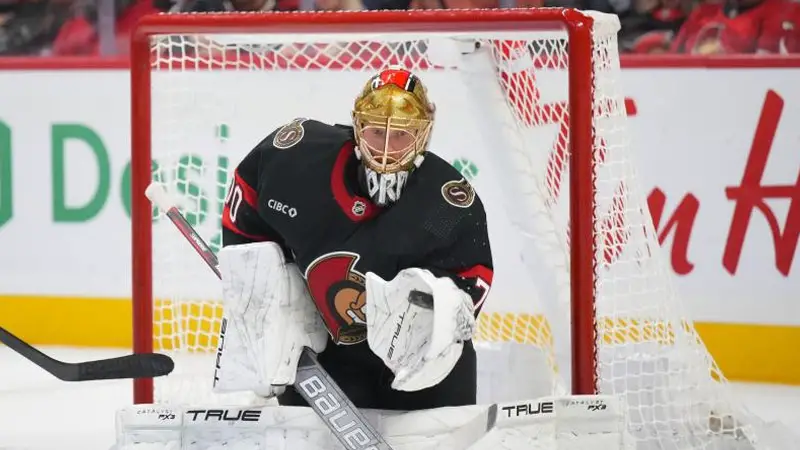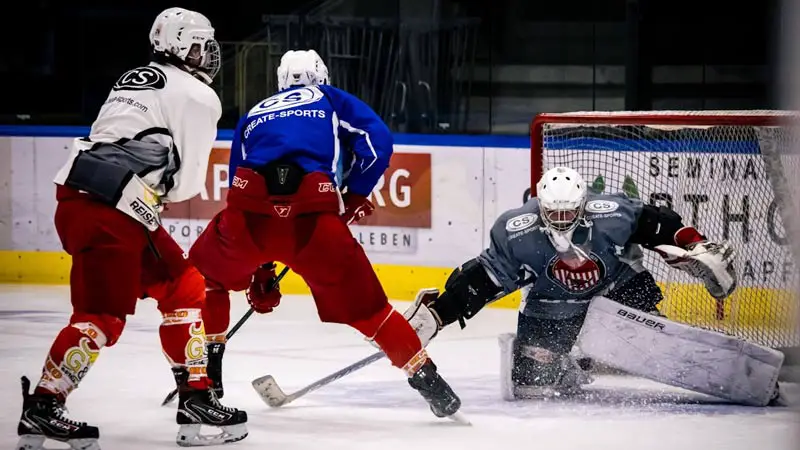The captain of a hockey team, adorned with the iconic ‘C’ on their jersey, embodies leadership, authority, and often becomes the face of the franchise.
But there’s a silent leader on the ice who rarely receives such recognition: the goalie. This comprehensive exploration delves into the complex world of goalie leadership in ice hockey, examining the rules, historical precedents, and the unique challenges and opportunities these masked guardians face.
The Rulebook: Why Goalies Can’t Be Captains in the NHL
The NHL rulebook explicitly prohibits goalies from serving as captains or alternate captains. This regulation, NHL Rule 6.1, traces back to the 1940s, prompted by Montreal Canadiens goalie Bill Durnan’s frequent excursions from his crease to contest calls with officials, disrupting the flow of the game.
This historical context reveals a practical reason for the rule. The fast-paced nature of hockey demands a captain who can readily engage with officials and participate in face-offs, something a goalie, confined to their crease for swift gameplay resumption, cannot do.
Recognizing Leadership Beyond the “C”
Despite the restrictions, teams have devised innovative ways to acknowledge the leadership qualities of their goalies. The Vancouver Canucks, for instance, named Roberto Luongo captain in 2008.
While he couldn’t wear the ‘C’ on his jersey due to NHL regulations, Luongo fulfilled many captaincy duties off the ice, becoming a crucial figure in the locker room.
The concept of an “honorary captain” also allows teams to informally recognize a goalie’s leadership. This acknowledges the significant influence a goalie can wield, even without the formal title.
Unpacking the Unique Leadership Traits of a Goalie
The demanding nature of the goalie position cultivates distinct leadership qualities that parallel, and sometimes even surpass, those of traditional captains. Let’s break down these qualities:
Mental Fortitude
Goalies face immense pressure, often finding themselves in the most crucial moments of the game. Their ability to remain calm and composed under fire is a testament to their exceptional mental strength.
Game Insight
Positioned at the back of the ice, goalies possess a unique perspective, enabling them to anticipate plays and guide teammates on positioning and strategy. Their game awareness and tactical acumen are invaluable assets to the team.
Communication
Goalies constantly communicate with their defensemen, orchestrating defensive strategies and initiating transitions from defense to offense. Their clear and concise communication is essential for maintaining a cohesive defensive unit.
Shining Examples of Goalie Leadership in the NHL
The NHL’s history is filled with goalies who, even without the formal title, have led by example, commanded respect, and inspired their teammates. These legendary figures serve as a testament to the powerful impact a goalie can have:
Jacques Plante
Beyond his revolutionary contributions to the game (popularizing the goalie mask), Plante was a staunch advocate for player safety, leading by example with his unwavering commitment to protecting himself and his fellow players.
Patrick Roy
Renowned for his fiery competitiveness, Roy, particularly during his time with the Colorado Avalanche, often assumed a leadership role, motivating his team with his passion and drive to win.
Henrik Lundqvist
Nicknamed “The King,” Lundqvist’s unwavering poise, relentless work ethic, and dedication to the New York Rangers served as an inspiration to his teammates and fans alike, solidifying his place as a true leader.
Challenges and Considerations for Goalie Captains

While the potential benefits of goalie leadership are evident, certain practical challenges need to be considered. The sources highlight these key points:
Rule Engagement
As mentioned earlier, a captain often interacts with officials regarding rule clarification and disputes. A goalie’s position requires them to stay in or near their crease for quick play resumption, making immediate engagement with officials logistically challenging.
Focus and Energy
The goalie position demands intense focus and concentration. Adding formal leadership responsibilities could potentially strain their mental energy and potentially impact their primary role.
Visibility and Presence
Captains often lead through their actions on the ice and interactions with teammates on the bench. A goalie’s confined role limits their ability to actively engage in all aspects of the game, particularly during live play.
These factors underscore the practical considerations that must be balanced when discussing goalie captaincy.
Shifting Tides: Modern Opinions and Movements
The conversation surrounding goalie captains continues to evolve, reflecting the dynamic nature of hockey and a willingness to challenge long-held traditions. The sources highlight some key trends:
- Respected Voices: Many goalies, even without official titles, hold immense sway in the locker room, their opinions and insights valued by teammates and coaches alike.
- Advisory Roles: Veteran goalies often transition into mentorship or advisory positions, leveraging their experience to guide younger players and shape team dynamics.
The shifting perspectives extend beyond the professional realm:
- Youth and Amateur Hockey: In developmental leagues, the captaincy is often rotated among players, including goalies. This approach emphasizes fostering leadership skills in all players, regardless of position.
- International Leagues: Some international leagues permit goalies to serve as captains, demonstrating a more flexible interpretation of leadership roles.
These trends suggest a growing acknowledgment that leadership is multi-dimensional and that the traditional model may not encompass all forms of leadership.
Concluding Thoughts: Embracing the Multifaceted Nature of Leadership
While the NHL maintains its rule prohibiting goalie captains, the discussion surrounding this topic reveals a deeper truth: leadership is not confined to a letter on a jersey. The sources emphasize that leadership can manifest in various forms, both on and off the ice.
Goalies, through their unique perspective, mental resilience, communication skills, and ability to inspire, often embody the qualities that make great leaders.
While they may not wear the ‘C,’ their influence within a team can be as profound as any formally recognized captain.
The ongoing debate surrounding goalie captains prompts us to reconsider traditional norms and embrace the evolving landscape of leadership in hockey.
The true measure of a leader lies not in a title but in their ability to inspire, guide, and elevate their teammates to achieve collective success.
This exploration of goalie leadership serves as a reminder that hockey, like any sport, is a constantly evolving entity. While traditions are valuable, the willingness to adapt and challenge conventions is essential for growth and progress.
The conversation surrounding goalie captains is just one example of how hockey continues to redefine leadership, recognizing the contributions of all players, regardless of their position on the ice.





James Felix